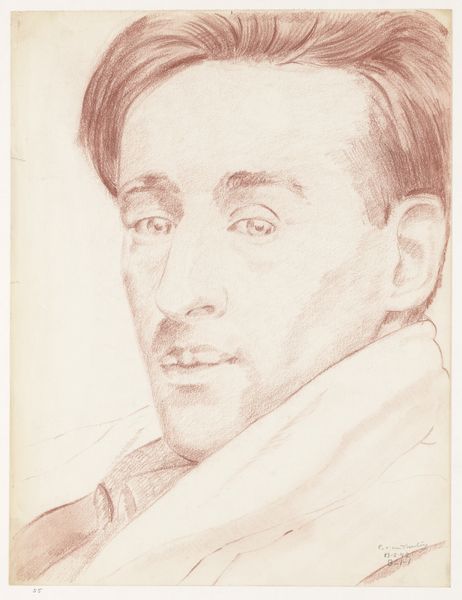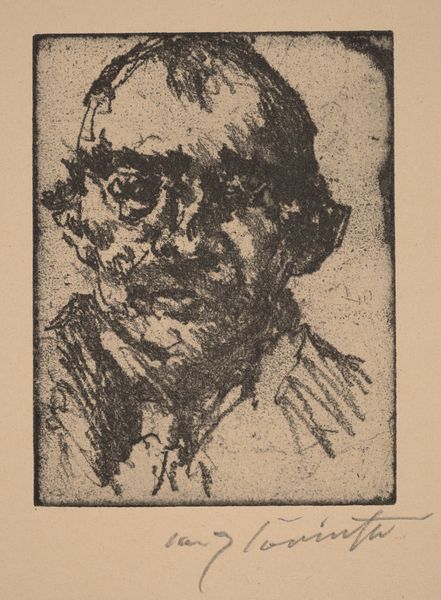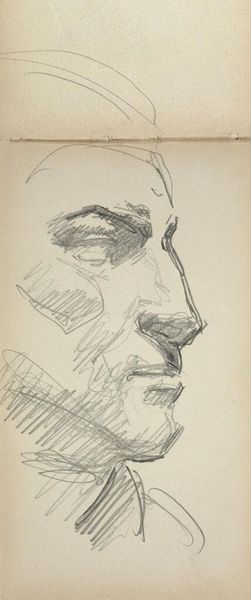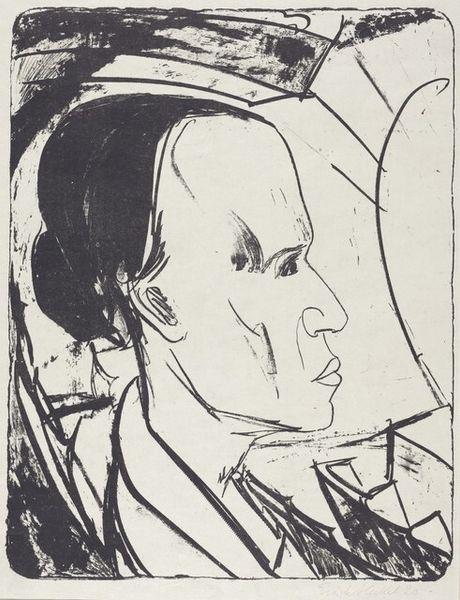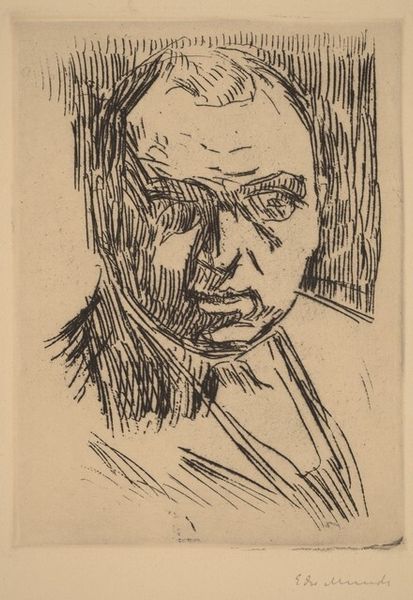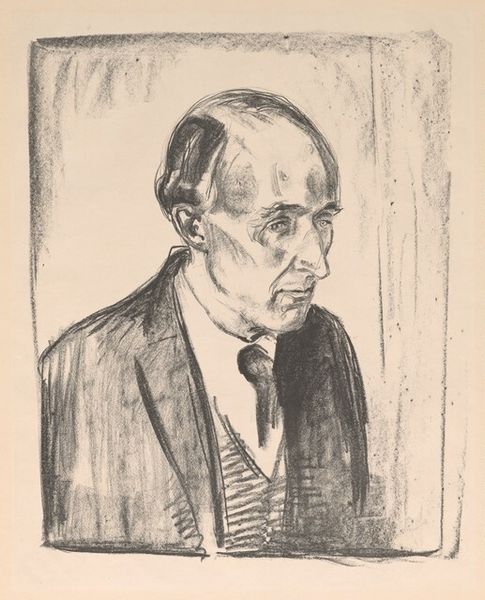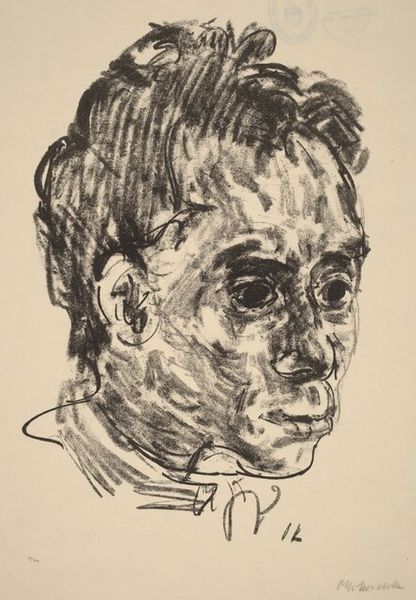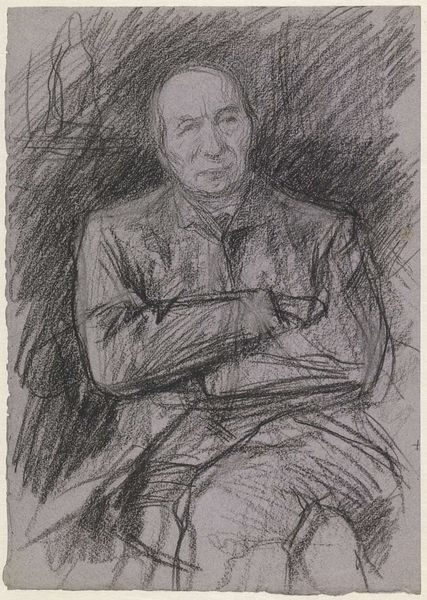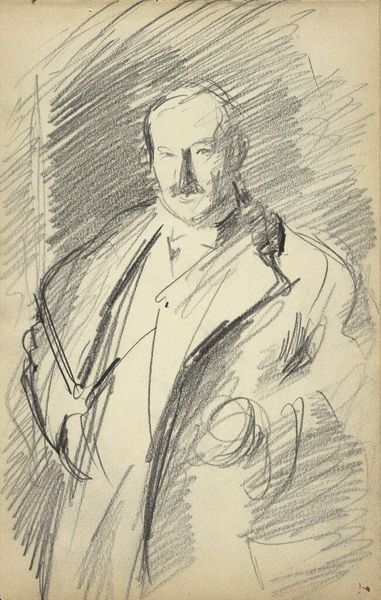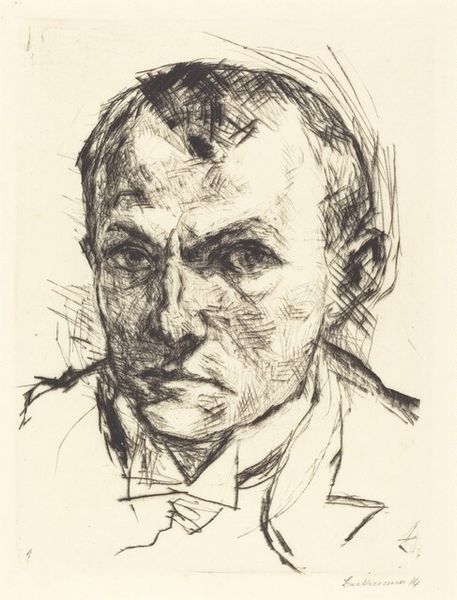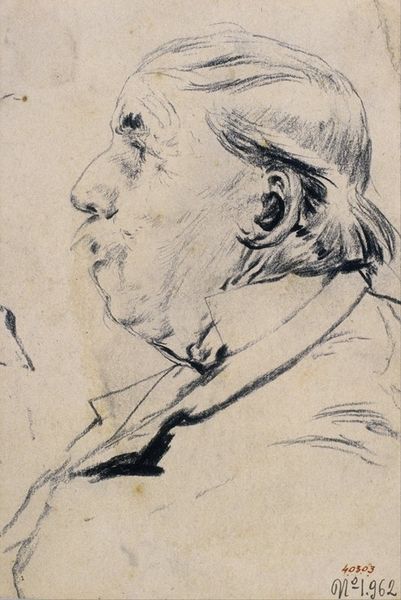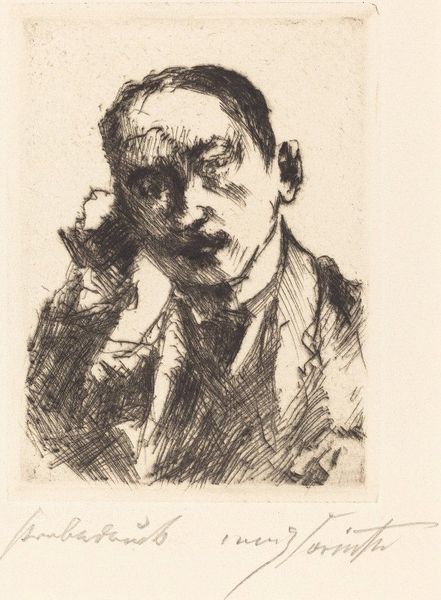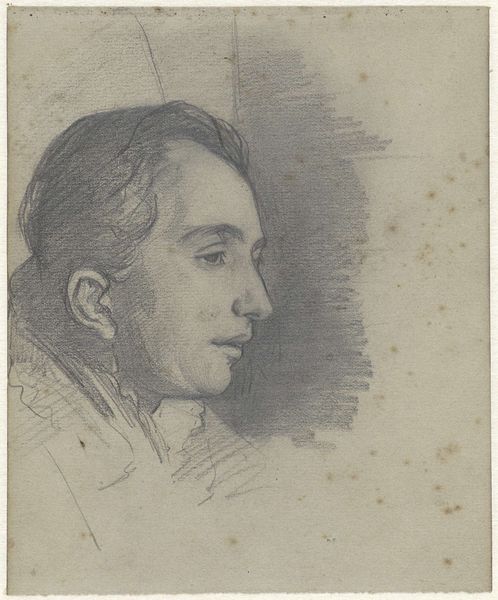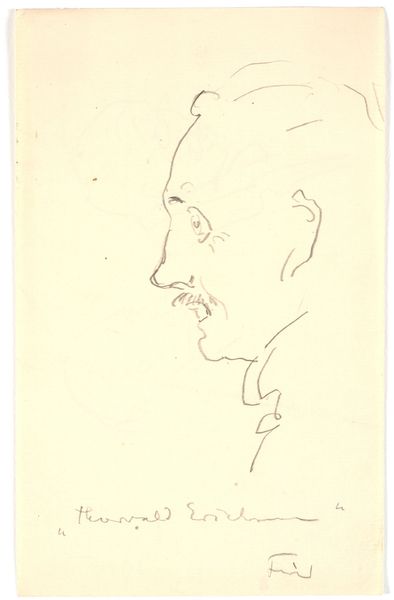
Dimensions 172 × 125 mm
Curator: Standing before us is “Male Head,” a charcoal drawing on paper created by Henry Tidey sometime between 1830 and 1872. It’s held here in the collection of the Art Institute of Chicago. Editor: Immediately, I’m struck by the somber mood and rather loose, almost dissolving forms of the face. It seems less concerned with strict representation, prioritizing instead, a certain emotional expression conveyed through the chiaroscuro of the charcoal. Curator: Exactly. Note how Tidey uses the medium to great effect. The varying pressures applied with the charcoal allow him to model the planes of the face, creating a remarkable sense of depth and volume. There’s a delicate interplay between light and shadow here. It isn't so much a study of human form, as an exploration of abstract value shifts. Editor: While the composition certainly displays sensitivity towards light and form, the absence of precise detail speaks volumes about 19th-century portraiture, I would suggest. Without the burden of depicting the individual with strict realism, the artist appears focused on exploring emotions which resonate powerfully given the social upheaval across Europe. Curator: It also makes you wonder about the sitter himself, doesn’t it? The slight tilt of the head, the subtle shadows under the eyes… the rendering projects something melancholy. There is certainly a strong degree of introspection visible in the features. Editor: Absolutely. I wonder, how did viewers at the time perceive such evocative portraits when they encountered them within larger exhibition contexts? And, more interestingly, who was Henry Tidey, and what circles did he move in? Was he influenced by romantic ideals when rendering such introspective likenesses? These are some of the questions, the picture invites in my mind. Curator: Undoubtedly the drawing poses these intriguing avenues of thought regarding portraiture during the romantic period. From close inspection, its form echoes this quite boldly. Editor: Indeed. Viewing art through varied interpretive angles, each attuned to one’s personal sensitivity makes our experience enriched with added layers of understanding. Curator: Yes, and hopefully prompts some reflection on what constitutes portraiture today and what role images of faces still serve.
Comments
No comments
Be the first to comment and join the conversation on the ultimate creative platform.
